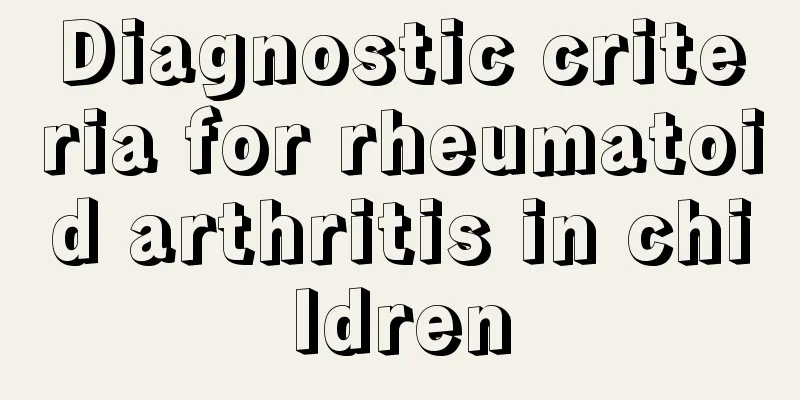Newborn baby's mouth turns blue

|
There are usually two explanations for the bluish or purple corners of a newborn's mouth. The first is that it is due to normal cold, and the second is that it may be due to cardiovascular hypoxia. For the former, it is easy to judge. As long as the baby is kept warm, the blue around the mouth will naturally disappear. However, if it is due to cardiovascular reasons, it is possible that the newborn's heart is born with certain defects, which can be a very tricky situation. Why are the corners of the baby's mouth blue? 1. Blue lips are often seen in clinical practice as cyanosis, which is mainly caused by cardiovascular hypoxia and increased carbon dioxide concentration in the blood. Common causes include congenital heart diseases such as patent foramen ovale. It is best to go to the hospital in time for further diagnosis and treatment. 2. It is recommended to go to the hospital as soon as possible. You can have examinations such as cardiac ultrasound or chest X-ray to rule out the possibility of congenital heart disease or respiratory disease. 3. The area around the baby's mouth and nose turns blue and the baby is prone to choking on milk. If the condition gets worse when the baby cries, you should pay attention to congenital heart disease. It is recommended that you take your baby to the pediatric cardiovascular department for relevant examinations. If there are any problems, seek timely treatment and pay attention to prevent colds. Treatment of blue corners of mouth in newborns 1. Some newborns have cyanosis on their limbs due to the cold, and the cyanosis disappears after keeping warm. This is a normal phenomenon. If the lips or tongue are cyanotic, or the cyanotic skin does not disappear after keeping warm, and the lips are blue or purple, it generally indicates hypoxia, which may be caused by a variety of reasons, such as overcooling, temporary lack of blood supply to the heart, and local hemangioma. If this symptom occurs for a long time, it is recommended to go to the hospital for examination in time. 2. Having congenital heart disease and amniotic fluid aspiration pneumonia, amniotic fluid aspiration pneumonia is relatively common. It is recommended that the child be hospitalized for treatment, complete examinations, a clear diagnosis, and appropriate treatment. 3. If the area around the child's mouth and nose is blue, you should consider whether he or she has heart disease. Suggestions: It is recommended to take the child to the hospital for a cardiac ultrasound to find out whether he or she has heart problems. |
<<: Baby can't sleep well after breastfeeding
>>: Newborn baby's body is red
Recommend
6 key points of children's diet and health care in autumn
As the saying goes, "One autumn rain brings ...
Will acute gastroenteritis in babies cause myocarditis?
If there is a baby at home, parents have a great ...
What should children pay attention to when they have measles
Children are at high risk of measles. Although th...
Treatment of falls in children
Falling is a very common injury for babies, and i...
What to do if your teenager wets the bed? Parents must read
Bedwetting is a behavior that is more common in i...
What to do if your baby is zinc deficient
Nowadays, many babies are generally zinc deficien...
Why does the baby spit bubbles?
Many of the baby’s behaviors are difficult for us...
How to correct the pigeon-toed walking of a one and a half year old baby
Some children start to walk with their feet turne...
What should I do if my one-year-old and two-month-old baby doesn't like to eat?
Summer is here and the weather is scorching hot. ...
The important role of zinc supplementation in children and the importance of zinc supplementation in babies
Zinc is an important element needed by the human ...
What are the treatments for allergic cough in children?
If a child suffers from a disease such as allergi...
What are the symptoms of neonatal encephalopathy during recovery?
Generally speaking, the symptoms of neonatal ence...
What should we do if children nowadays are prone to constipation?
The health problems of today's minors are als...
The baby will turn sideways during the confinement period
Newborn babies are curious about the world. They ...
What should babies eat for diarrhea? Diet therapy is the most important
The baby's physique is very weak, so if you d...









